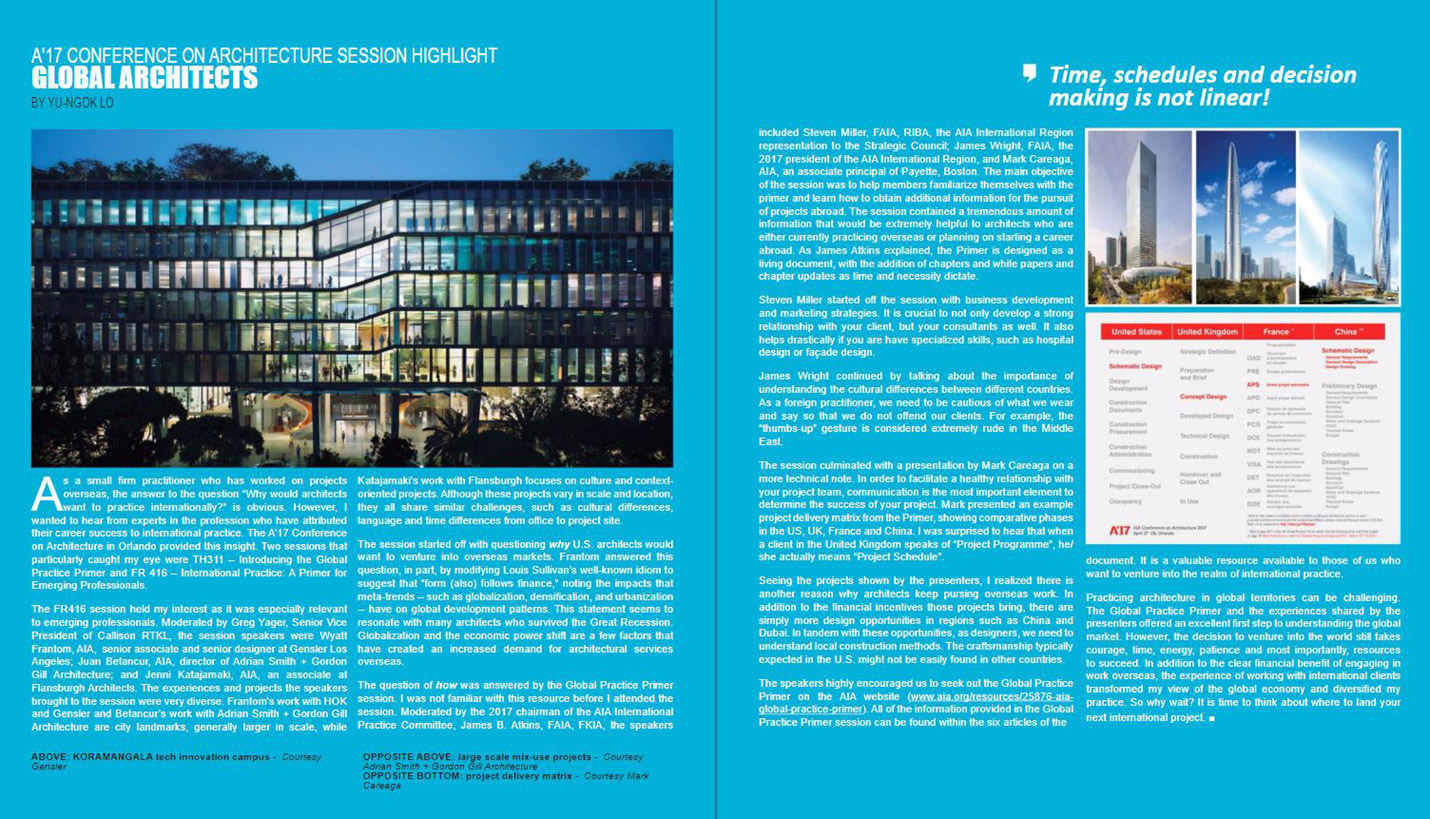

Promoting the Practice of Architecture Abroad
Why might an architect want to practice internationally? After all, international projects typically involve unique challenges such as cultural differences, language and time differences between office and project site. That question was posed to attendees at A’17, the annual AIA National conference by architects who do that very thing. As the Young Architects Forum reports in their second 2017 issue of YAF Connection, “Jet-Set”, one answer given was the increased economic demand for architectural services overseas.
The speakers also explained that the AIA Global Practices Primer, released earlier this year, answered the question of how US-trained and licensed architects can best practice overseas. Two of them were contributing authors to the Primer and the third provided input and feedback on it, so all spoke from positions of expertise. Page Senior Principal James M. Wright, FAIA, who wrote the “Regional and cultural understanding” section, gave the audience examples of how common cultural practices in one country such as the “thumbs up” often used by Americans could give great offense in another.
In addition to anecdotes, this section gives practical advice such as the consideration of travel-related medical insurance, variances in visa requirements, measurement systems and more. Professionally, it also sets expectations that utility infrastructure and service capacity can vary widely, which should be evaluated before scoping and designing, notes that decision-making processes differ from culture to culture and offers insight into project phase sequencing and completion. James gained his expertise from almost 40 years of international practice around the world, including numerous government, education and corporate projects.
Other sections of the Primer cover the benefits of international practice, business development and marketing in other countries, legal issues and project delivery. Multiple members of the 2016 AIA International Practice Committee Advisory Group contributed content on their areas of expertise. The 47-page document also provides recommendations for architects currently practicing internationally.
By the end of the AIA presentation, Steven Miller, FAIA, of Planning and Design Consultants, LLC; Mark Careaga, AIA, of Payette and James Wright had persuaded Yu-Ngok Lo of YAF, who subsequently wrote about the discussion, that the experience of working with international clients would transform architects’ views of the global economy and diversify their practices. One of his takeaways was, “time, schedules and decision making are not linear” and he echoes the speakers’ sentiment that the Global Practices Primer on the AIA website is a valuable resource to those interested in, and already, practicing internationally.
To read the article “Global Architects”, start at page 22 of the YAF 2Q 2017 issue.
07/31/2017








